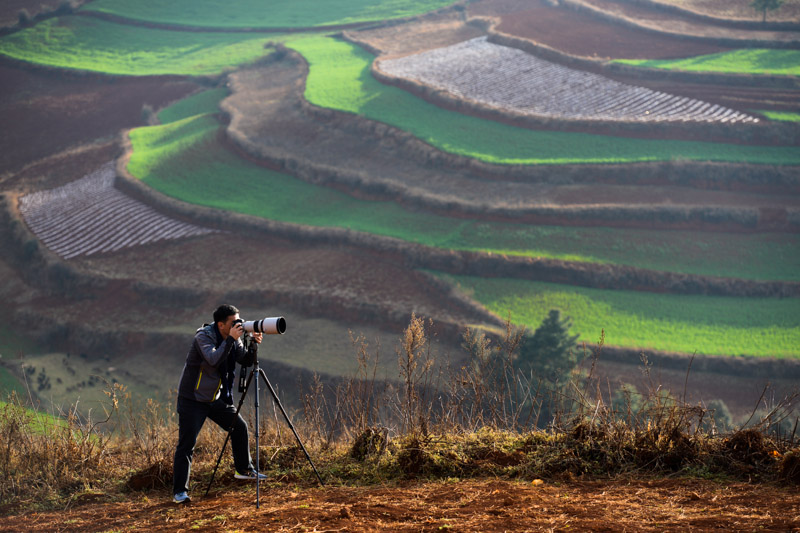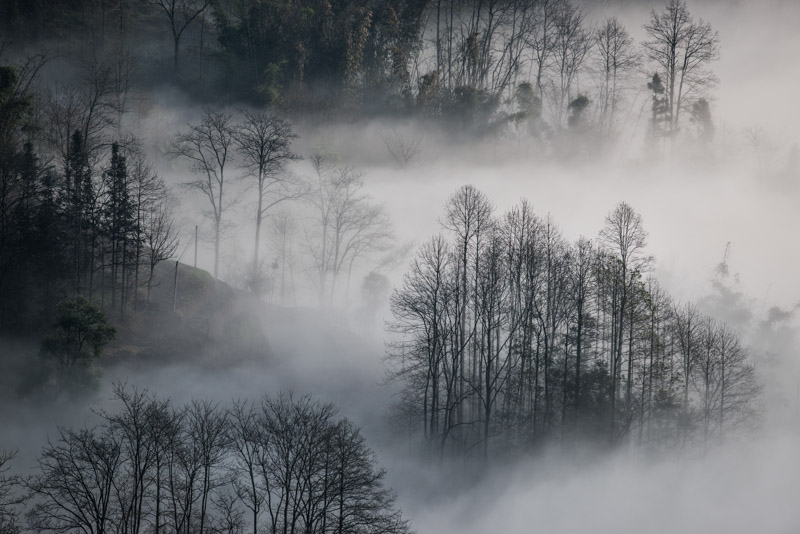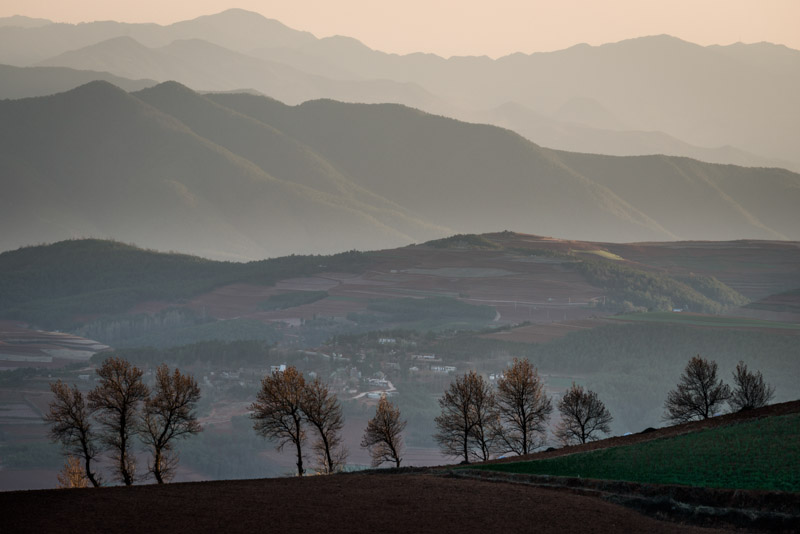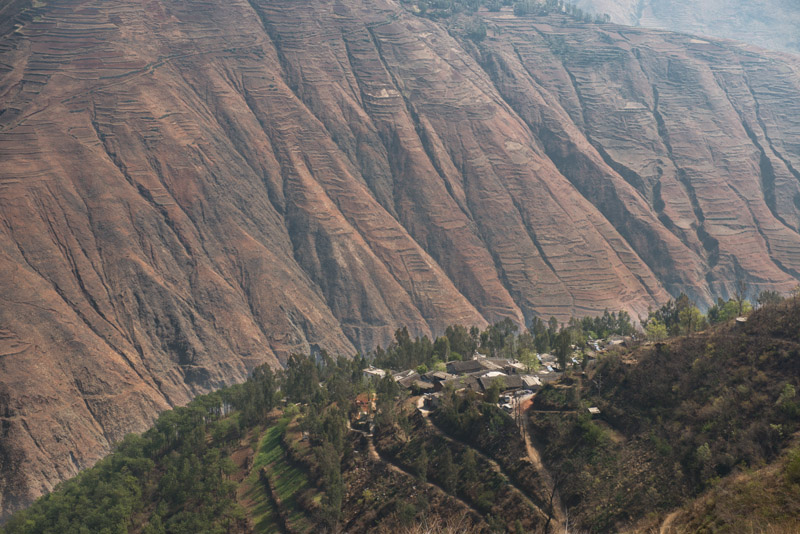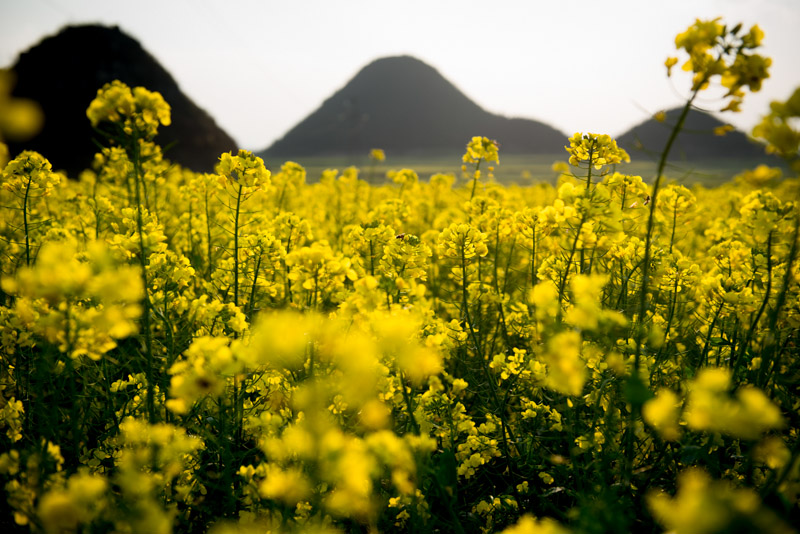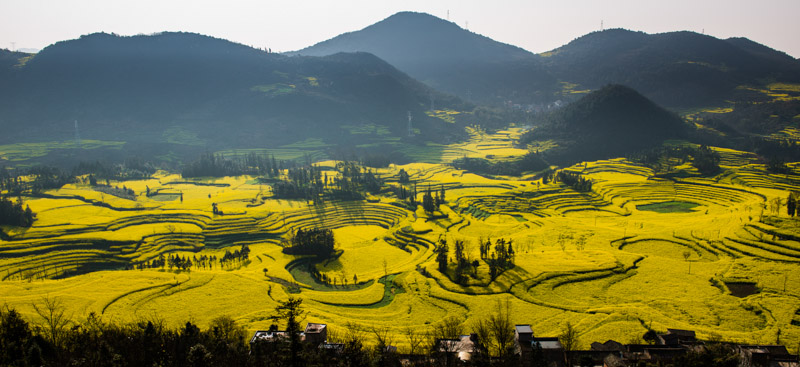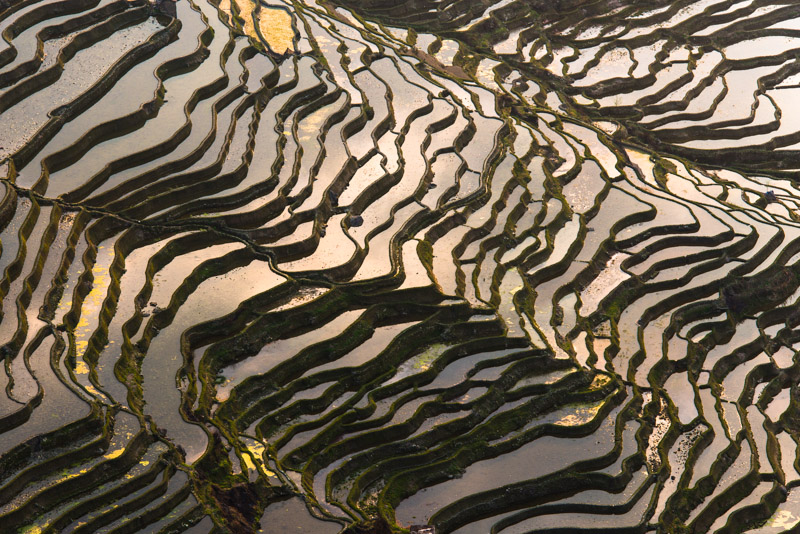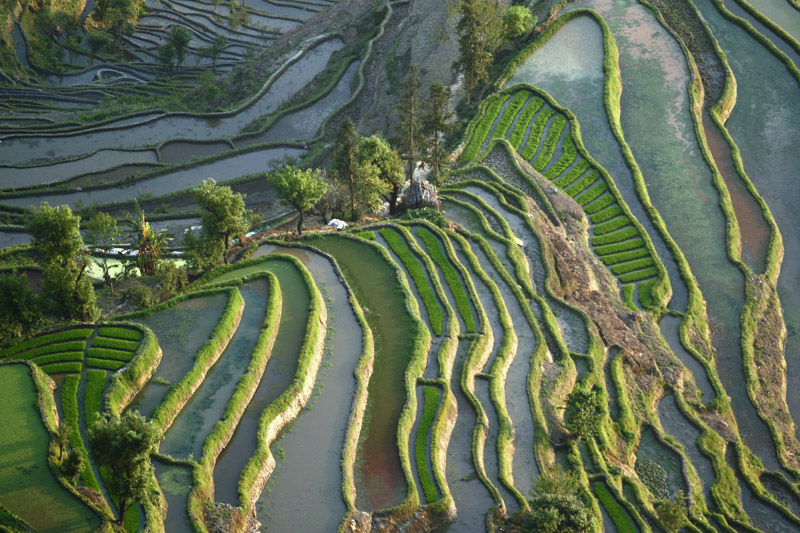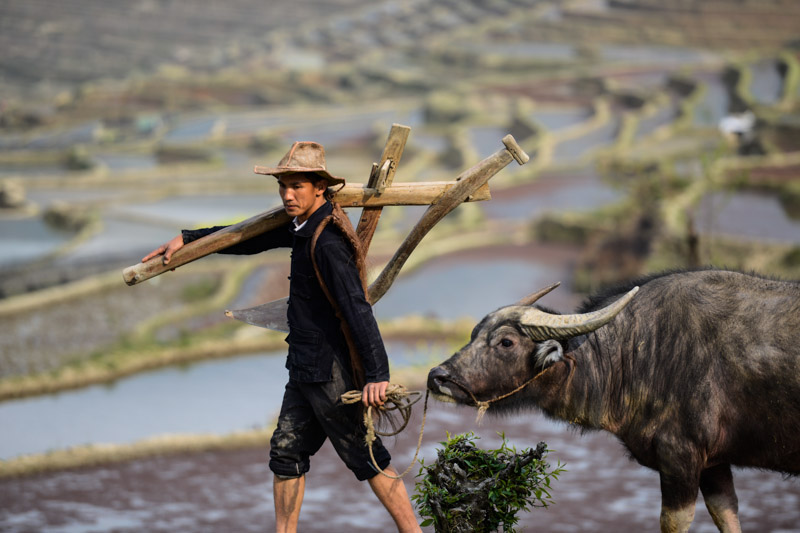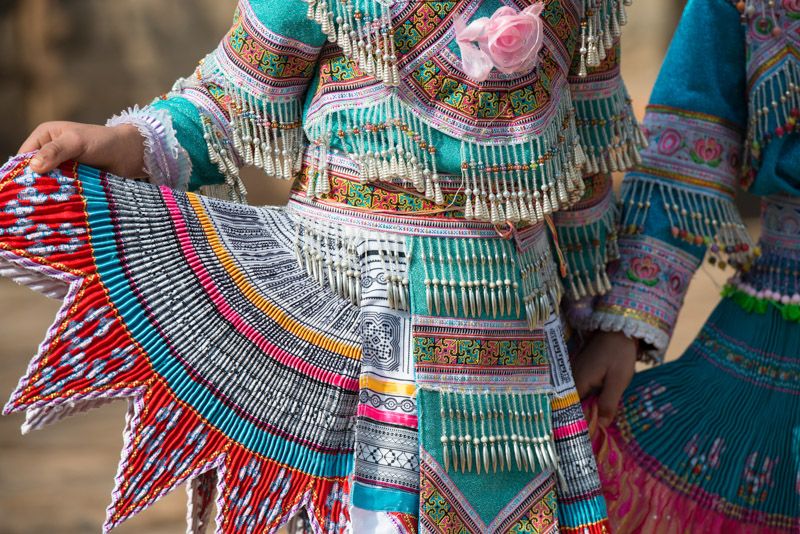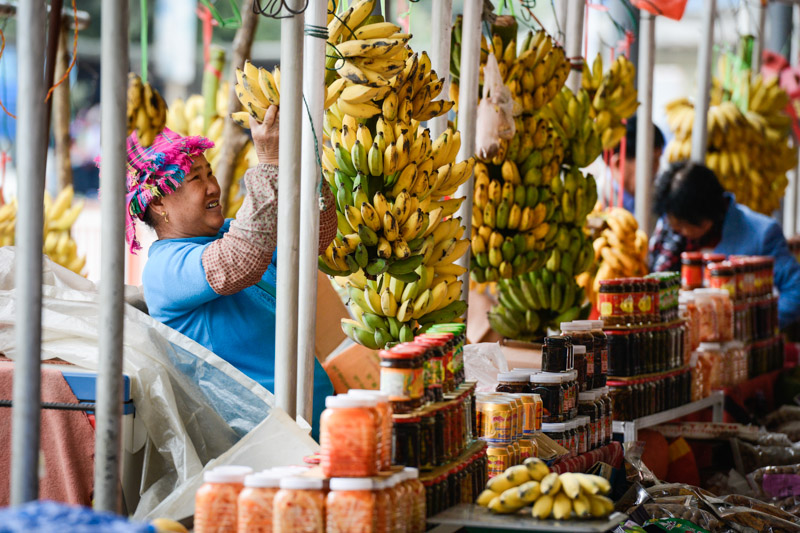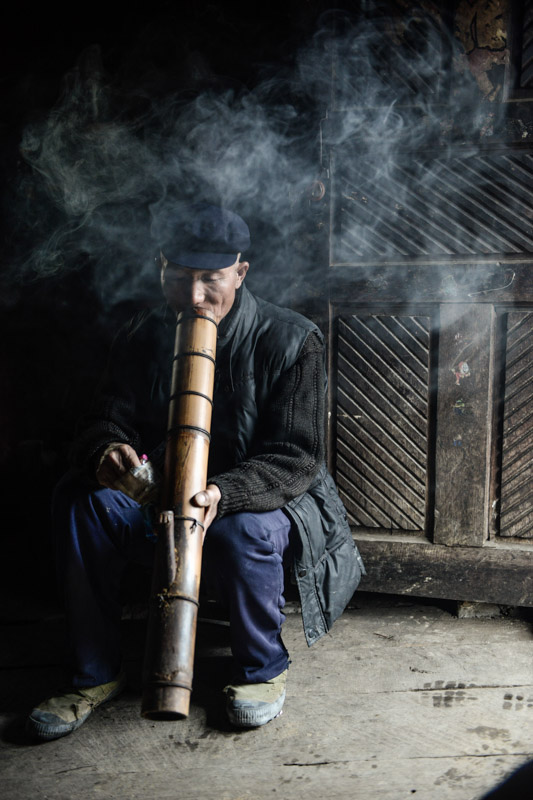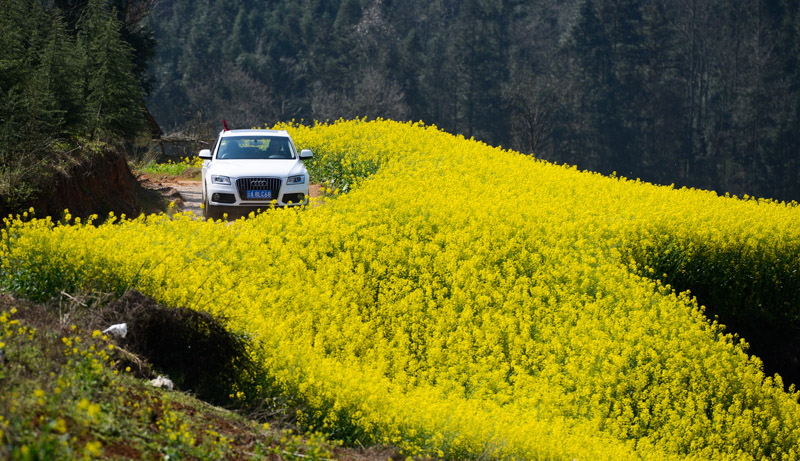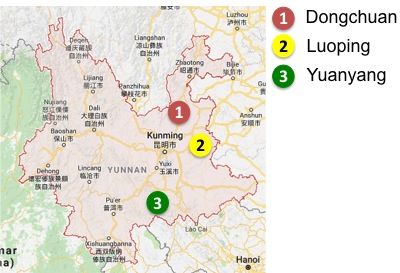Ordinarily, fields might not be the kind of subjects that have you reaching for your camera. But the fields of eastern Yunnan aren’t your ordinary meadows…
Within a compact area of eastern Yunnan are three spectacular places where humans’ efforts to put a bowl of rice (or potatoes or buckwheat) on the table have had a beautiful impact on three landscapes that were already striking to begin with.
Just outside the small town of Dongchuan (東川, map below), a small country lane leads into the hills. As the road climbs and winds around the hills’ contours, the earth itself grows redder and rustier; this is Dongchuan’s red earth region.
Once the road levels out, views shift between vistas over dizzying drops (Dongchuan lies more than 1km vertically below on the valley floor) and gently rolling hills.
Photographers are drawn here each spring by these contrasts and the chance to photograph the landscape before crops obscure the earth’s colour. Iron deposits in the soil have weathered into a deep, rich red, making the soil fertile ground for growing potatoes, white rapeseed and buckwheat.
Farther south, the fields that surround Luoping (羅平) blaze a rather different colour; bright yellow. Close to Yunnan’s border with Guizhou, Luoping’s farmers plant golden rapeseed (油菜花) that flowers early each spring, carpeting the region in swathes of vibrant yellow flowers.
The land around Luoping is a plain broken up with the humps of limestone karst hills that erupt from the earth. In places, tiers of terraces follow the shape of the shallow hills, sculpting them into “snail fields”.
Farther south again, where Yunnan butts up against Vietnam’s northern highlands, the Red River has carved a deep valley through another remarkable landscape. Around the hillside town of Yuanyang (元陽), dramatic terraces of paddy fields glint in the sun at dawn and dusk, earning them the moniker “Mirrors of God”.
Generations of Hani farmers have built and maintained these steep terraces – over a thousand tiers in some places – and still work them today, growing crops of rice.
As with Dongchuan and Luoping, the best time to visit Yuanyang is early spring, before the rice shoots break up the beautiful reflections of the clouds and sun above, and before the agricultural work of late spring and summer gets underway.
While the land itself sometimes steals the show, it’s impossible to talk about this region without mentioning the people who earn their livelihoods from these fields.
Several ethnic minorities are closely connected with each of these landscapes. Yi in Dongchuan, Buyi in Luoping and Hani in Yuanyang, with smaller numbers of Hui and Miao living in certain villages.
Village markets are the focus of everyday life here. People take a break from their work and come to make money and spend money, share information and gossip.
But beyond their hard physical work and the concerns of earning a living, people here have much leisure time and the pace of life is slow and easy. Occasionally even the most enthusiastic and dedicated photographer might be tempted to put down their camera and simply soak it all in…
All of the photographs above were taken on our photography journey through Dongchuan, Luoping and Yuanyang, Yunnan through a lens: Red Earth and Fields of Gold.
